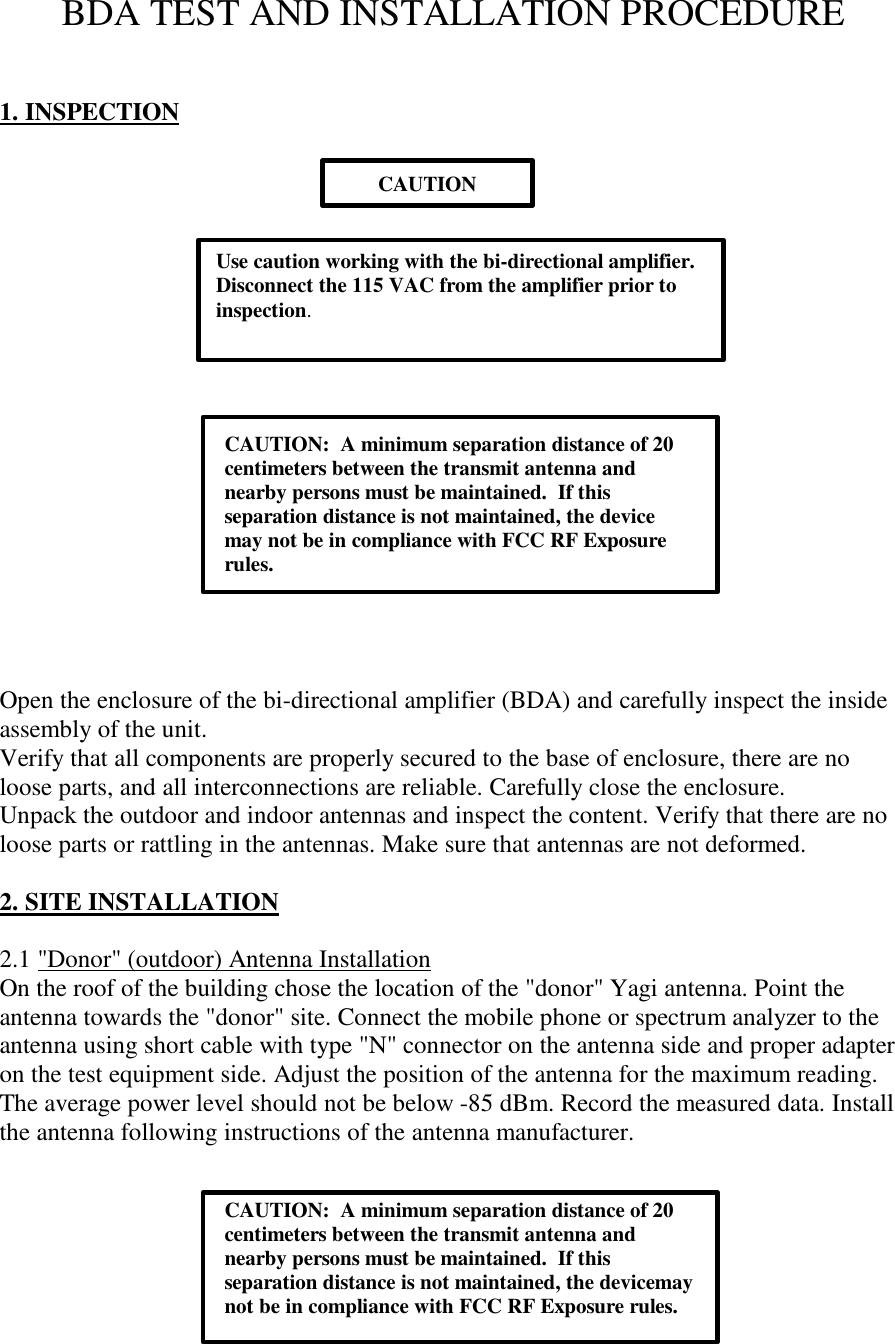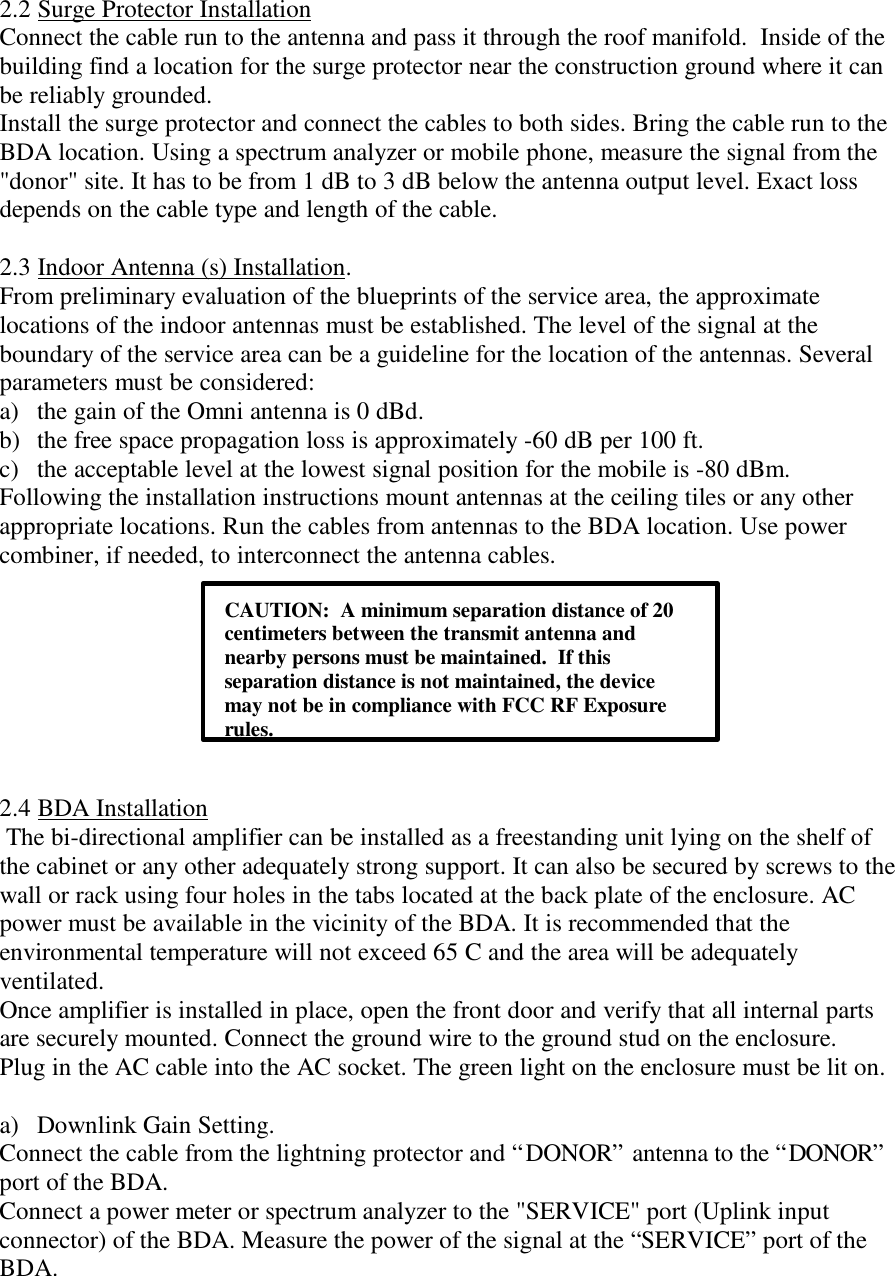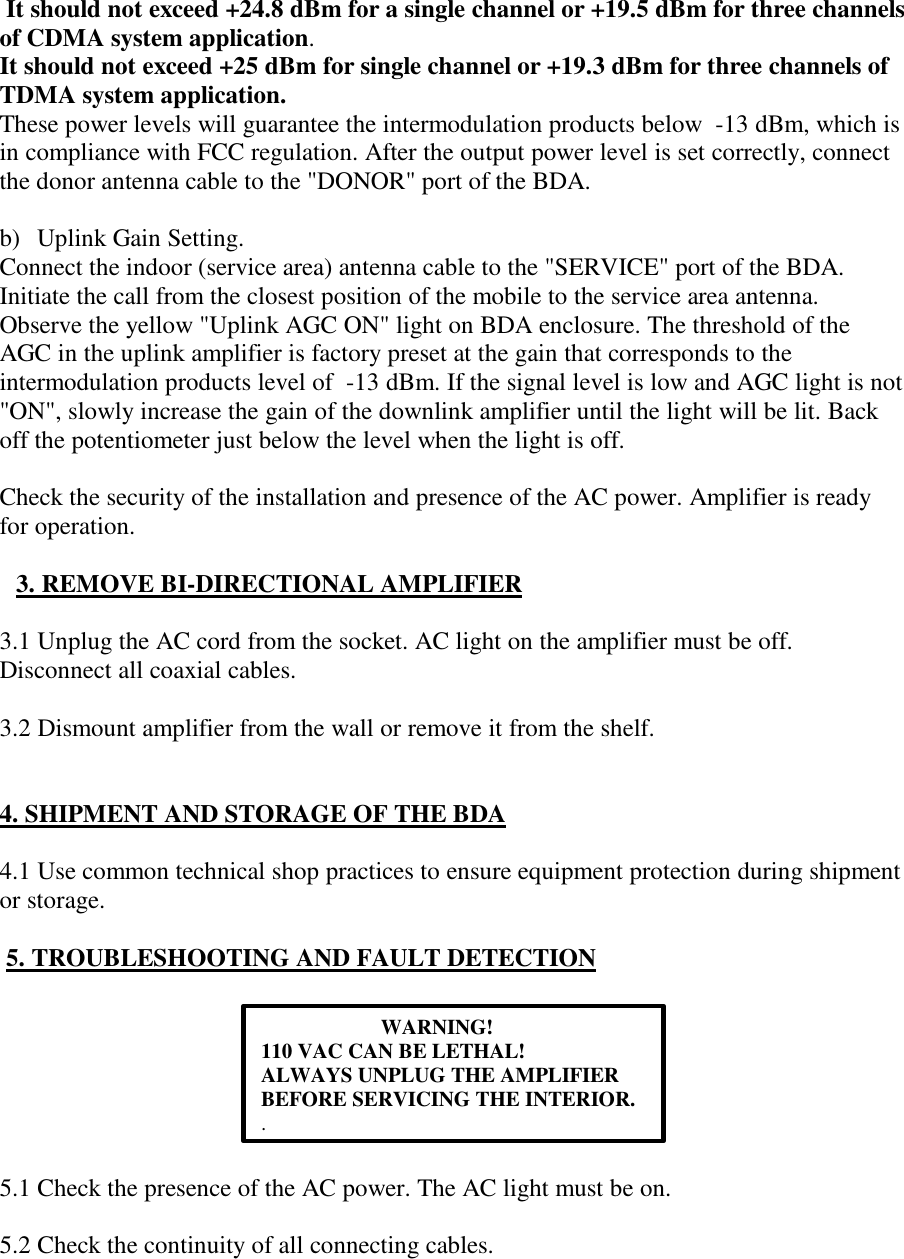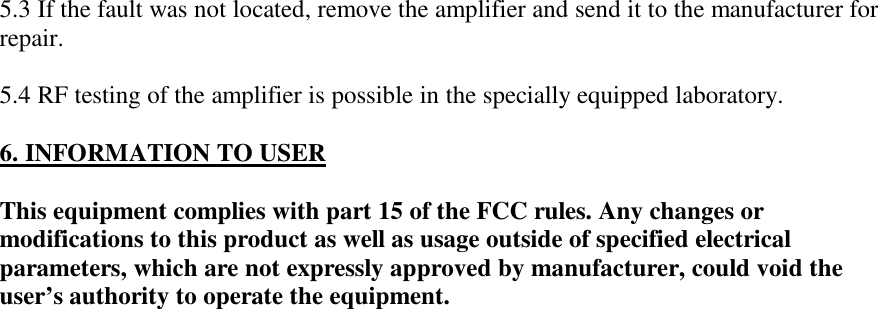Communication Components BDA-8087-52C Bi-Directional Amplifier model BDA-8087-52C User Manual BDA TEST AND INSTALLATION PROCEDURE1
Communication Components Inc Bi-Directional Amplifier model BDA-8087-52C BDA TEST AND INSTALLATION PROCEDURE1
Users Manual



